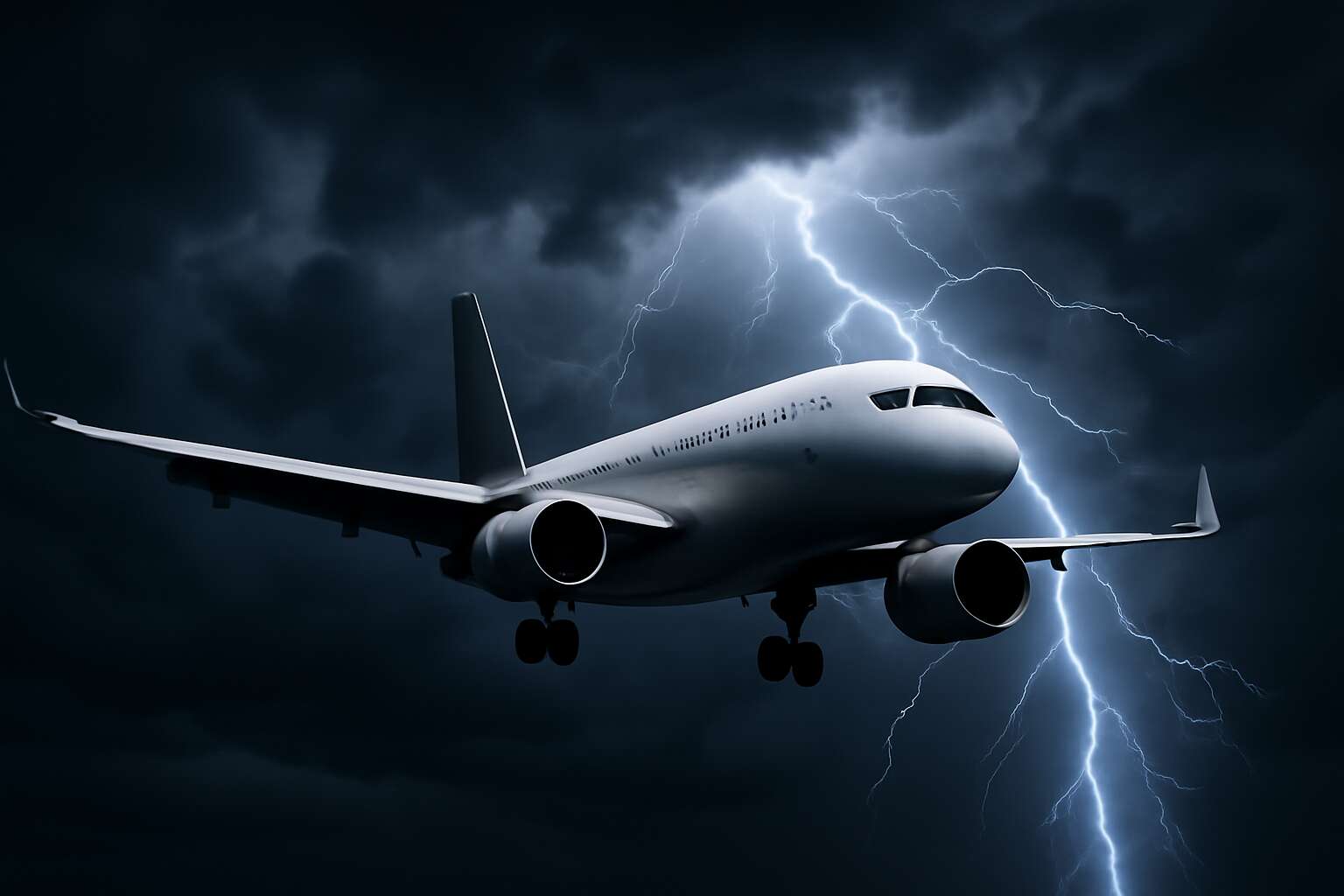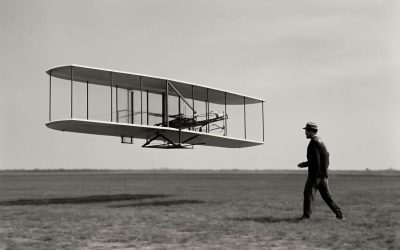Understanding Thunderstorms and Aviation Safety
What Are Thunderstorms?
Thunderstorms are nature’s dramatic theatrical productions—complete with thunderclaps that shake windows and lightning that slices through the sky like celestial swords. But what about the aircraft that dare to venture into these turbulent skies? The question of can aeroplanes fly in thunderstorms often sparks curiosity, especially among those who wonder whether flying through chaos is merely a myth or a calculated risk. Modern aviation technology has evolved to a point where pilots and aircraft can navigate these stormy giants with astonishing precision, but it’s not without its nuances.
Understanding thunderstorms is crucial for appreciating why they are such formidable obstacles in aviation. At their core, they are characterised by towering cumulonimbus clouds, intense wind shear, and unpredictable lightning strikes. These phenomena pose significant risks to aircraft, yet with advances in weather radar and real-time monitoring, pilots can often avoid the most perilous parts of the storm. The question remains: can aeroplanes fly in thunderstorms? The answer depends on various factors, including the severity of the storm and the aircraft’s technological capabilities.
Dangers Posed by Thunderstorms to Aircraft
When it comes to the question of whether can aeroplanes fly in thunderstorms, the answer isn’t as straightforward as a simple yes or no. Thunderstorms are unpredictable beasts, capable of turning a smooth flight into a rollercoaster ride in seconds. Despite their reputation for chaos, modern aircraft are equipped with advanced weather radar systems and sophisticated onboard instruments that help pilots navigate these turbulent skies with remarkable precision. It’s almost as if they have a sixth sense for avoiding the worst of Mother Nature’s temper tantrums.
Nevertheless, thunderstorms pose serious safety dangers to aircraft. The primary hazards include severe wind shear, lightning strikes, hail, and turbulence so intense it can shake the aircraft’s bones. These factors can compromise the structural integrity of planes or cause dangerous loss of control. To mitigate these risks, air traffic controllers and pilots often implement strict protocols, such as rerouting around storm cells or delaying take-offs. For those curious about the technicalities, it’s worth noting that aircraft are designed to withstand lightning strikes—think of it as a celestial slap on the wrist rather than a full-blown lightning bolt showdown.
In essence, the capacity of can aeroplanes fly in thunderstorms hinges on a mixture of technology, weather conditions, and operational prudence. Pilots rely heavily on real-time weather data and their training to make split-second decisions—sometimes choosing to brave the storm, sometimes steering clear of it entirely. It’s a delicate balancing act, showcasing the marvels of modern aviation safety and the sheer nerve of those who pilot these metal giants through nature’s most volatile displays.
How Airports and Airlines Monitor Weather Conditions
In the labyrinthine dance between nature’s fury and human ingenuity, understanding how thunderstorms impact aviation safety becomes paramount. Airports and airlines have evolved into vigilant sentinels, continuously monitoring weather conditions with an almost obsessive precision. Advanced radar systems and meteorological data feeds form the backbone of this vigilant watch, transforming chaotic atmospheric phenomena into actionable intelligence. These technological marvels allow aviation professionals to anticipate, interpret, and respond to the tempest’s whims.
Real-time weather monitoring employs a sophisticated mix of tools, including Doppler radar and satellite imagery, which collectively paint a dynamic picture of storm activity. This layered approach enables decision-makers to identify potential hazards like wind shear zones or hail pockets well before an aircraft reaches them. The process is so meticulous that some airports even categorise storm severity levels, guiding pilots with clear directives.
- Weather radars
- Satellite data
- Automated weather stations
By weaving these elements together, airlines can determine whether it is safe to continue with a planned flight or if rerouting around a storm is essential. The question of can aeroplanes fly in thunderstorms hinges on this intricate interplay of technology, meteorological understanding, and operational prudence—a testament to the relentless pursuit of safety in the face of nature’s unpredictable temperament. Watching this delicate balance unfold reveals how modern aviation navigates the treacherous skies with a combination of science, skill, and an unyielding respect for the storm’s might.
Aircraft Capabilities and Limitations During Thunderstorms
Design and Technology of Modern Airplanes
Modern aircraft are marvels of engineering, equipped with a suite of advanced technology designed to tackle Mother Nature’s less charming moods. When pondering whether can aeroplanes fly in thunderstorms, it’s comforting to know that today’s planes are far from vulnerable relics of the past. They’re built with lightning-fast sensors, weather radar, and autopilot systems that are practically psychic. These innovations enable pilots to navigate around the nastiest parts of a storm, rather than through it.
However, it’s crucial to recognise that aircraft do have their limits. While the latest jets are designed to endure lightning strikes and turbulent air, they are not invincible. Severe turbulence, hail, and intense electrical activity can still pose serious risks. That’s why airlines and pilots rely on sophisticated weather monitoring systems to determine whether it’s safe to fly or if the storm’s fury is better left to the weather charts. Can aeroplanes fly in thunderstorms? In many cases, yes — provided the storm isn’t a raging monster that exceeds the aircraft’s technological thresholds.
Instrumentation and Weather Radar Systems
Modern aircraft are equipped with a symphony of sophisticated instrumentation, transforming the cockpit into a command centre that can seemingly anticipate nature’s fiercest temper tantrums. The question of can aeroplanes fly in thunderstorms often sparks curiosity, but the truth is these technological marvels possess remarkable capabilities. Weather radar systems act as vigilant sentinels, scanning the skies in real-time, detecting even the most subtle shifts in electrical activity or turbulent air. This heightened awareness allows pilots to chart a course that skirts around the most treacherous regions of a storm, rather than plunging directly into chaos.
Advanced weather radar systems are complemented by a suite of sensors and autopilot technology, making it possible for modern aircraft to endure lightning strikes and turbulent gusts with resilience. However, their limits are not infinite. Severe turbulence, hail, and extraordinarily intense electrical activity can still challenge an aircraft’s structural integrity and safety systems. When storms escalate beyond a certain threshold, airlines rely on precise meteorological data to make the critical decision: can aeroplanes fly in thunderstorms, or is it safer to divert and wait for calmer skies? It’s a delicate dance between technological prowess and cautious prudence, ensuring safety remains paramount amidst the unpredictable theatre of nature.
Aircraft Features That Mitigate Thunderstorm Risks
Modern aircraft are marvels of engineering, meticulously designed to withstand the chaos of nature’s fiercest tempests. While the question of can aeroplanes fly in thunderstorms often sparks debate, the truth is that their capabilities are extraordinary—yet not limitless. These flying giants boast advanced weather radar systems that serve as vigilant guardians, detecting turbulence and electrical activity with remarkable precision. This technology enables pilots to navigate around the most dangerous parts of a storm, maintaining safety without sacrificing efficiency.
Aircraft features such as reinforced fuselages, lightning protection systems, and turbulence dampers further enhance resilience during thunderstorms. For instance, lightning strikes are often harmlessly absorbed by specially grounded aircraft, preventing damage and ensuring passenger safety. However, there are limits: intense hail, severe turbulence, or electrical activity beyond certain thresholds pose significant risks. That’s why airlines rely heavily on real-time meteorological data—sometimes opting for diversion—to ensure that the answer to can aeroplanes fly in thunderstorms remains a cautious, calculated yes, rather than a reckless gamble. It’s a delicate balance of technological prowess and human judgement, safeguarding lives amidst the unpredictable theatre of nature.
Standard Procedures for Flying Through or Around Thunderstorms
Avoidance Strategies and Flight Path Adjustments
When faced with the wild, unpredictable temperament of thunderstorms, pilots don’t just cross their fingers and hope for the best. Instead, they rely on a set of rigorous standard procedures designed to keep everyone safe. These avoidance strategies are the aviation equivalent of a seasoned chess player dodging checkmate in a single move—precise and calculated. Modern aircraft are equipped with weather radar systems that can spot the ominous grey monsters from miles away, allowing pilots to plot a course around the storm’s wrath.
Flight path adjustments often involve rerouting the aircraft to avoid the most turbulent sections of the storm. This isn’t just a matter of steering clear; it’s a strategic ballet that considers wind shear, lightning activity, and the potential for hail. Air traffic controllers play a pivotal role, offering real-time updates and guiding pilots through a maze of meteorological challenges.
- Divert around thick storm cells
- Ascend above the turbulence zone when possible
- Or descend to safer altitudes if storms are lurking below
It’s all about ensuring that the question “can aeroplanes fly in thunderstorms?” remains a resounding yes—so long as they follow the well-rehearsed choreography of avoidance strategies and flight path adjustments designed for the skies’ most tempestuous moments.
Use of Real-Time Weather Data in Cockpit
When it comes to navigating the unpredictable fury of thunderstorms, pilots rely heavily on standard procedures that hinge on real-time weather data. The question of can aeroplanes fly in thunderstorms is answered not through guesswork but by meticulous planning and precise execution. Modern cockpit technology offers a window into the storm’s behaviour, allowing pilots to make informed decisions swiftly.
Using advanced weather radar systems, pilots can detect the most turbulent zones and plan their route accordingly. This real-time data is essential for maintaining safety and avoiding hazardous conditions. Airlines and air traffic control teams work in tandem, constantly updating weather information and guiding pilots around developing storm systems.
- Assess the intensity and location of the storm.
- Consult live radar data to determine the safest course of action.
- Implement flight adjustments, such as rerouting or altitude changes, to circumnavigate the storm.
With such rigorous procedures in place, the answer to can aeroplanes fly in thunderstorms remains a confident yes—when guided by technology, expertise, and a proactive approach to weather challenges. The skies may be tempestuous, but with modern aviation’s arsenal of real-time data, aircraft can traverse even the wildest thunderstorms safely and efficiently.
Communication with Air Traffic Control During Stormy Weather
In the labyrinthine theatre of modern aviation, communication during stormy weather is as vital as the aircraft’s own resilience. When confronted with the tumult of thunderstorms, pilots meticulously adhere to established procedures that hinge on clear, continuous dialogue with air traffic control. This dialogue is not merely procedural but a vital lifeline that ensures the safe navigation of turbulent skies. The question—can aeroplanes fly in thunderstorms—finds its answer in a symphony of real-time updates, precise coordination, and unwavering professionalism.
During adverse weather conditions, maintaining an open line with air traffic control becomes paramount. Pilots relay detailed reports on storm intensity, location, and evolving hazards. In tandem, controllers provide critical guidance, issuing directives for rerouting or altitude adjustments. This coordinated effort is often reflected in structured communication protocols, such as the
- urgent updates on storm developments
- clear instructions for course deviations
ensuring that aircraft circumvent the most dangerous zones with calculated prudence.
By integrating advanced radar data and real-time weather information, crews navigate the tempest’s unpredictable choreography with a nuanced awareness. The seamless exchange of information fosters a proactive environment—one where the question of whether planes can fly in thunderstorms becomes less about risk and more about strategic mastery. When technology and expertise converge, the sky’s fury is met not with surrender but with calculated resilience, allowing aircraft to traverse even the most formidable storms with unwavering confidence.
Legal and Regulatory Guidelines for Flying in Thunderstorms
FAA and International Aviation Regulations
Flying in thunderstorms remains one of the most scrutinised aspects of modern aviation, with strict legal and regulatory frameworks designed to prioritise safety above all else. The question of whether can aeroplanes fly in thunderstorms is not merely a matter of capability but one of compliance with internationally mandated standards. The International Civil Aviation Organization (ICAO) and the Federal Aviation Administration (FAA) have established comprehensive guidelines that govern flight operations during adverse weather conditions.
Under these regulations, aircraft are generally prohibited from flying through thunderstorms unless they are equipped with advanced weather radar and other safety features. The FAA’s rules are particularly strict; pilots are trained to avoid thunderstorms entirely, recognising the unpredictable nature of these storms and the significant risks involved. Compliance with these standards ensures that the question of can aeroplanes fly in thunderstorms remains a theoretical consideration rather than a routine practice. For aviation professionals, these legal boundaries are as vital as the aircraft’s technological capabilities, creating a layered safety net that has proven effective over decades of flight.
- Adherence to international aviation safety standards
- Utilisation of real-time weather data and radar systems
- Strict pilot training and operational protocols
Ultimately, these guidelines reflect a broader philosophy: that safety is not merely a regulatory obligation but an ethical imperative. While aircraft are marvels of engineering capable of withstanding many environmental challenges, the legal and regulatory landscape underscores that flying in thunderstorms is generally avoided unless absolutely necessary and properly equipped. It’s this delicate balance of technology, regulation, and prudence that defines the modern approach to aviation safety — an approach that continuously evolves to answer the question of can aeroplanes fly in thunderstorms with increasing confidence and caution.
Operational Restrictions and Exceptions
Legal and regulatory guidelines form the backbone of modern aviation safety, especially when considering the question of can aeroplanes fly in thunderstorms. These regulations are crafted not merely as bureaucratic hurdles but as a testament to the industry’s unwavering commitment to human life. Strict operational restrictions are in place to prevent aircraft from venturing into dangerous storm conditions, safeguarding both crew and passengers from the unpredictable fury of nature.
However, there are exceptional circumstances where exceptions are made. For instance, in emergency situations, aircraft equipped with advanced weather radar systems and storm-penetration technology may be authorised to navigate through certain storm conditions. Yet, such decisions are taken with meticulous caution, adhering to a layered safety protocol that balances technological capability with regulatory oversight.
- Real-time meteorological data is continuously evaluated by flight operations teams.
- Air traffic controllers coordinate with pilots to determine the safest possible route.
- Aircraft must meet stringent safety standards before any deviation from standard avoidance procedures is permitted.
This intricate dance of regulation, technology, and human judgment exemplifies the delicate art of flying in adverse weather. The question of can aeroplanes fly in thunderstorms remains largely rhetorical—reserved for rare, carefully controlled instances—underscoring the aviation sector’s deep-rooted dedication to safety above all else.
Pilots’ Training on Storm Management
Legal and regulatory guidelines form the backbone of aviation safety, especially when addressing the complex question of can aeroplanes fly in thunderstorms. These regulations are not mere red tape but a testament to the industry’s unwavering commitment to protecting lives. Pilots undergo rigorous training to manage storm-related risks, ensuring they understand the limits and protocols necessary for safe operation under adverse weather conditions.
One critical component of this safety framework is storm management training. Pilots are equipped with advanced meteorological knowledge and practical skills to assess when flying in thunderstorms is permissible. This training includes:
- Interpreting real-time weather data
- Utilising storm-penetration technology responsibly
- Executing precise flight path adjustments
Such expertise allows pilots to make informed decisions, balancing technological capability with regulatory restrictions. Despite these measures, the overarching principle remains clear: can aeroplanes fly in thunderstorms only under strict operational conditions, with safety always in the forefront of decision-making. This rigorous training and regulation underscore the industry’s resilience and dedication to safeguarding every flight against the unpredictable fury of storms.
Situational Examples and Safety Records
Case Studies of Flights Navigating Thunderstorms
In the shadowed corridors of modern aviation, the question lingers—can aeroplanes fly in thunderstorms without succumbing to nature’s wrath? Tales whisper of pilots navigating the tempest’s fury, their aircraft dancing amid lightning’s jagged teeth, guided by technology that seems almost magical.
Case studies reveal that through meticulous planning and advanced weather radar systems, flights often traverse thunderstorms safely. A notable example is a transcontinental journey where an aircraft skirted the edge of a colossal storm system, emerging unscathed, its crew confident in the aircraft’s resilience. Such instances underscore that, with precision and discipline, flying through thunderstorms is not merely a gamble, but a calculated risk.
The safety record of aircraft during storm navigation is testament to the rigorous standards of aviation. Despite the ominous reputation of thunderstorms, the combination of cutting-edge instrumentation and trained pilots ensures that *can aeroplanes fly in thunderstorms* remains a question answered with a resolute yes, within the bounds of safety and technological sophistication.
Statistical Data on Storm-Related Aviation Incidents
While the skies often evoke awe and trepidation in equal measure, statistical data reveals a reassuring truth: aircraft are remarkably resilient when it comes to navigating thunderstorms. In fact, studies indicate that less than 0.1% of all commercial flights experience weather-related incidents in stormy conditions, a testament to the rigorous safety standards in aviation. These figures underscore that, thanks to cutting-edge technology and meticulous pilot training, the question of whether can aeroplanes fly in thunderstorms is answered with a confident yes—when proper protocols are observed.
Real-world examples further bolster this confidence. During a notable transatlantic flight, the crew received real-time updates about a developing storm system ahead. Utilising advanced weather radar systems, they charted a course that safely skirted the turbulent core, avoiding the worst of the storm without delay. Such operational agility demonstrates that modern aircraft and skilled pilots can, indeed, traverse storm-affected airspace with minimal risk.
Moreover, the safety record of aircraft during storm navigation is extraordinary. The International Civil Aviation Organization (ICAO) reports that fatalities linked directly to thunderstorms are exceedingly rare, thanks to comprehensive safety measures. The combination of real-time weather data, innovative aircraft features, and strict adherence to operational restrictions ensures that can aeroplanes fly in thunderstorms — a complex dance of science and skill that continues to evolve, safeguarding lives amid the unpredictable theatre of the sky.
Lessons Learned from Past Incidents
Throughout aviation history, there have been remarkable instances that underscore the resilience of modern aircraft in stormy skies. One such example is a transpacific flight that encountered a severe thunderstorm but managed to navigate safely thanks to real-time weather updates and pilot expertise. This incident reinforced the importance of adhering to strict safety protocols and leveraging cutting-edge technology. The crew’s swift decision to adjust their flight path exemplifies how pilots, armed with advanced weather radar systems, can make split-second choices that keep passengers safe.
Lessons learned from past incidents highlight a clear truth: while thunderstorms pose inherent risks, they are rarely catastrophic when proper precautions are in place. The aviation safety record during storm navigation is testament to this, with fatalities linked directly to thunderstorms being exceedingly rare. Modern aircraft are equipped with sophisticated instrumentation and weather mitigation features that allow them to fly in thunderstorms without compromising safety.
- Continuous monitoring of weather conditions ensures that pilots are aware of developing storm systems well in advance.
- Strict operational restrictions prevent flights from entering dangerous storm zones, safeguarding lives.
- Ongoing pilot training emphasizes storm management, preparing crews to respond effectively to evolving weather challenges.
Future Innovations and Technologies Enhancing Flight Safety in Thunderstorms
Advances in Weather Forecasting and Detection
As technology advances at a breathtaking pace, the horizon of flight safety in thunderstorms grows ever brighter. The future of aviation hinges on breakthroughs that transform turbulent skies from danger zones into manageable challenges. Cutting-edge weather forecasting and detection systems are now pushing the boundaries of what is possible, offering pilots and airlines unprecedented clarity about storm development and intensity. These innovations aren’t just about early warnings—they are about real-time, hyper-accurate data that can decisively influence flight paths and safety protocols.
Imagine a sky where the whisper of a storm’s approach is no longer a threat but a puzzle to be solved before it materialises. Emerging technologies such as advanced LIDAR and satellite-based meteorological sensors are reshaping the landscape. These tools enable aeroplanes to navigate through or around thunderstorms with surgical precision, raising the question—can aeroplanes fly in thunderstorms? The answer, increasingly, is yes, thanks to the synergy of innovation and rigorous safety standards.
- Enhanced weather detection systems integrated into aircraft cockpit instrumentation
- Artificial intelligence algorithms predicting storm trajectories with remarkable accuracy
- Real-time data sharing between aircraft and ground stations, ensuring dynamic flight adjustments
In this brave new world, the synergy of technological ingenuity and meticulous regulation paves the way for safer, more confident journeys through the tempest’s eye. As these innovations continue to evolve, the age-old question—can aeroplanes fly in thunderstorms?—becomes less a matter of possibility and more a testament to human ingenuity conquering the chaos of nature’s fury. The skies, once feared as unpredictable and perilous, now beckon with promise and precision, turning storms from adversaries into navigable phenomena.
Enhanced Real-Time Storm Tracking for Pilots
As aviation technology surges forward, the realm of storm navigation is undergoing a remarkable transformation. Future innovations promise enhanced real-time storm tracking for pilots, turning what was once an unpredictable hazard into a manageable challenge. Cutting-edge systems now provide hyper-accurate data, enabling pilots to anticipate storm behaviour with unprecedented clarity. This leap in capability raises the compelling question—can aeroplanes fly in thunderstorms? The answer is increasingly affirmative, thanks to these technological breakthroughs.
By integrating advanced weather detection tools directly into aircraft cockpit instrumentation, pilots gain a dynamic picture of approaching storms. Artificial intelligence algorithms now predict storm trajectories with remarkable accuracy, allowing for more precise flight planning. Moreover, real-time data sharing between aircraft and ground stations ensures that flight paths can be adjusted instantaneously, keeping passengers safe and comfortable. Such innovations exemplify how modern aviation is evolving beyond simple avoidance, towards confident navigation through turbulent skies.
Looking ahead, future technologies like advanced LIDAR and satellite-based meteorological sensors will further refine storm tracking. These tools will enable pilots to navigate through or around thunderstorms with surgical precision, making the once-daunting question of can aeroplanes fly in thunderstorms an increasingly historical concern. As these innovations blossom, the sky’s fury becomes less an obstacle and more a challenge that human ingenuity is ready to conquer.
Emerging Aircraft Technologies for Storm Penetration and Avoidance
As aviation technology evolves at a dizzying pace, the question of whether can aeroplanes fly in thunderstorms is becoming less of a gamble and more of a calculated risk. The future of storm navigation is being reshaped by innovations that blend artificial intelligence, cutting-edge sensors, and satellite meteorology into a seamless symphony of safety. With these advances, the once-daunting prospect of flying through turbulent weather is edging closer to routine rather than recklessness.
Emerging aircraft technologies designed specifically for storm penetration and avoidance are a game-changer. These include hyper-sensitive LIDAR systems that can map storm structures from kilometres away, and satellite-based meteorological sensors that provide real-time, high-fidelity data to the cockpit. This technological arsenal enables pilots to make split-second decisions, often with surgical precision. For example, an aircraft might now be equipped with a
- storm detection radar
- predictive analytics algorithms
- adaptive flight control systems
that work together to navigate turbulent skies safely. Such innovations are transforming the answer—once a cautious “maybe”—to a confident “absolutely.”
Future advancements aim to push the boundaries even further. Imagine a scenario where aircraft autonomously adjust their altitude and course in response to dynamic storm conditions, all while maintaining passenger comfort. These futuristic systems, integrated with satellite meteorology and enhanced LIDAR, promise to make flying in thunderstorms not just feasible but routine. As a result, the age-old question of can aeroplanes fly in thunderstorms is becoming a relic of the past, replaced by a new era of aviation mastery powered by human ingenuity and technological prowess.




0 Comments